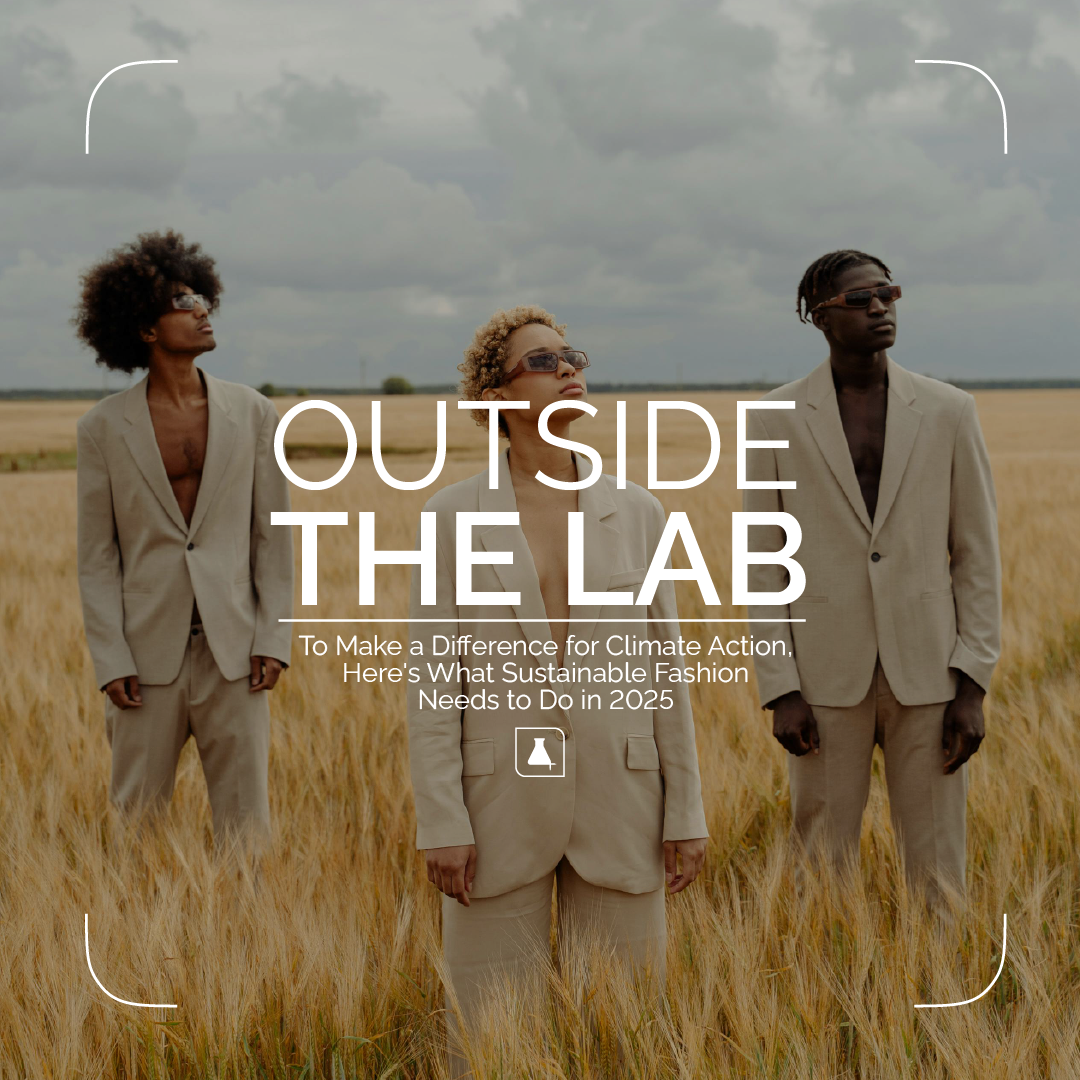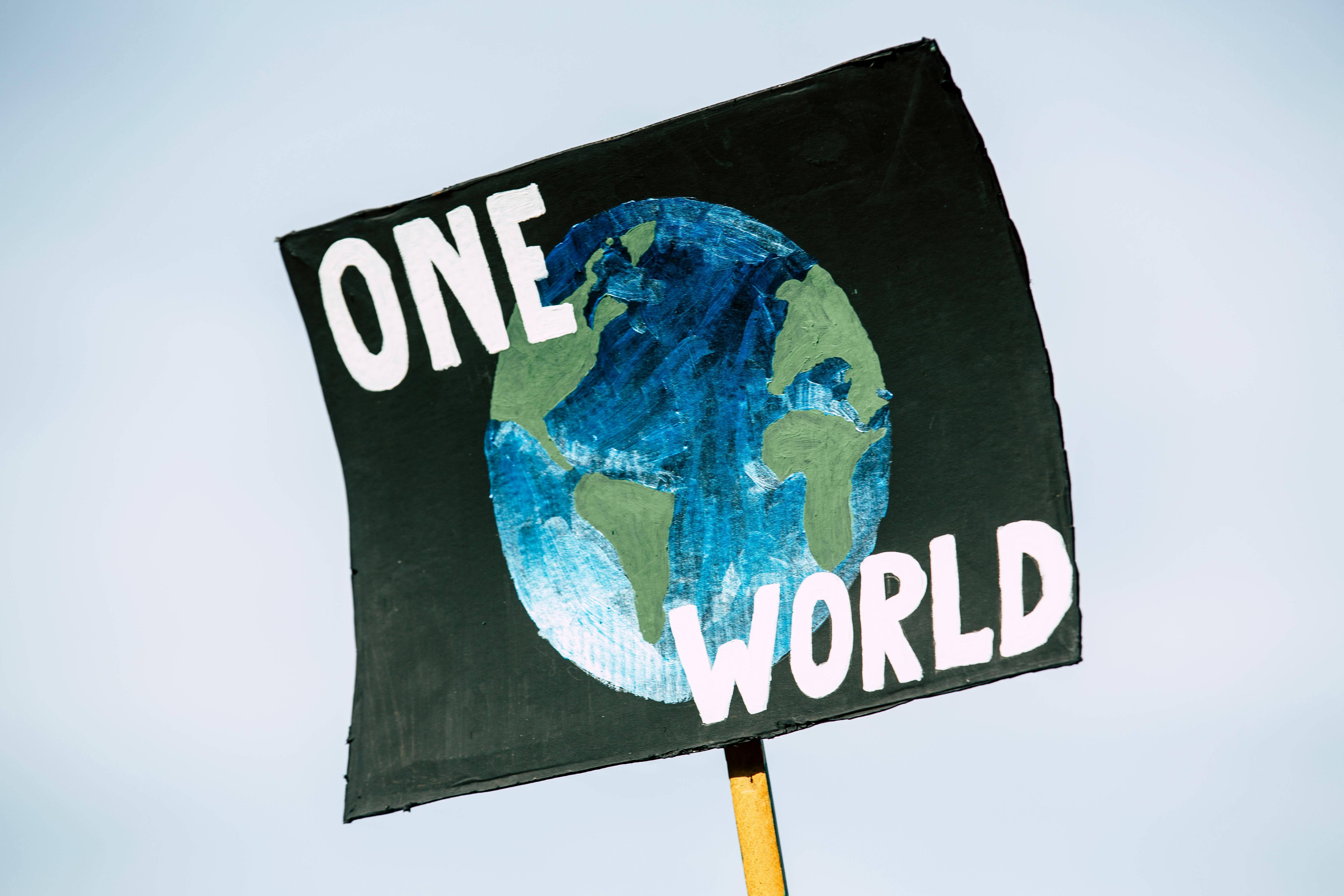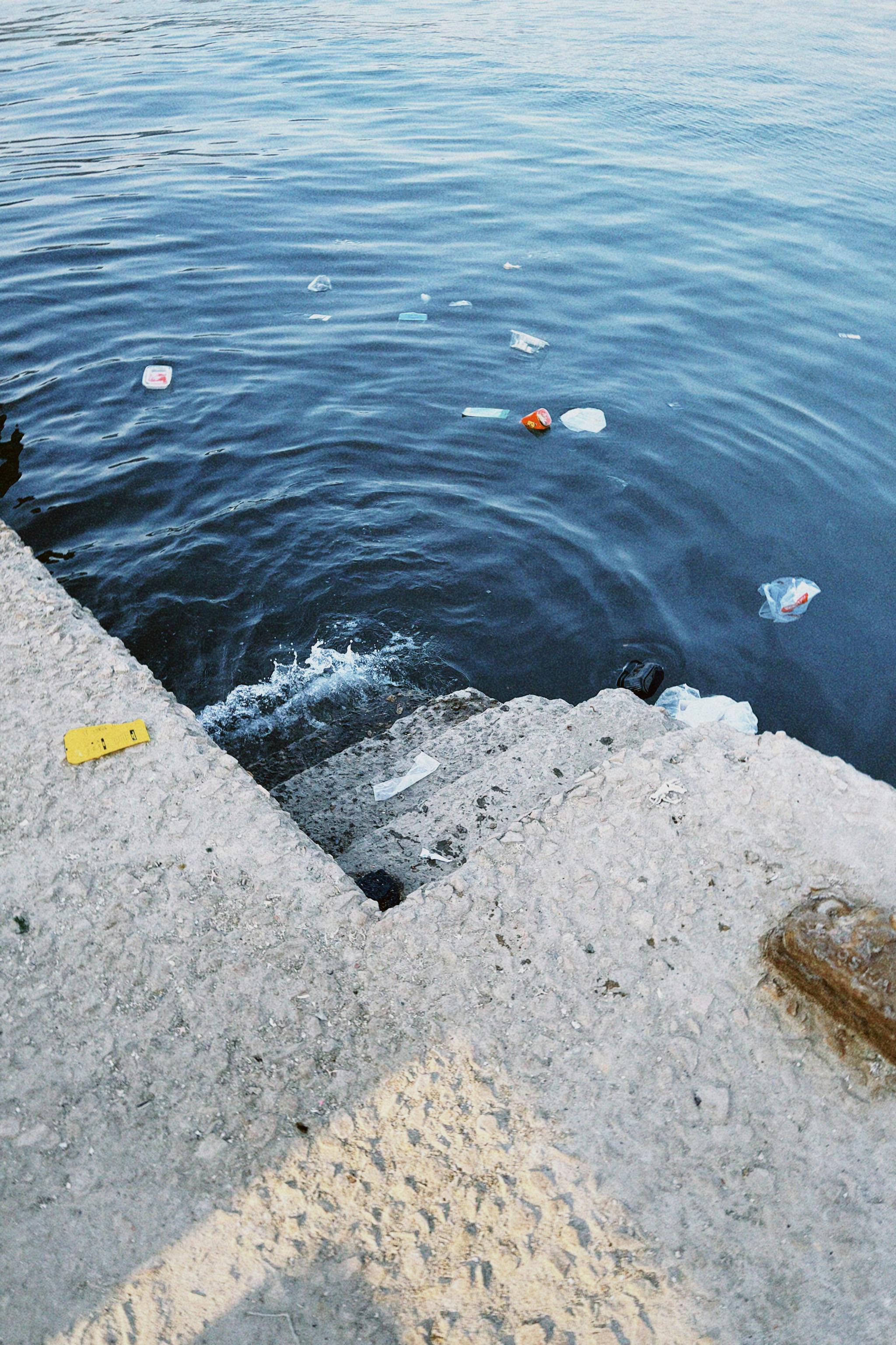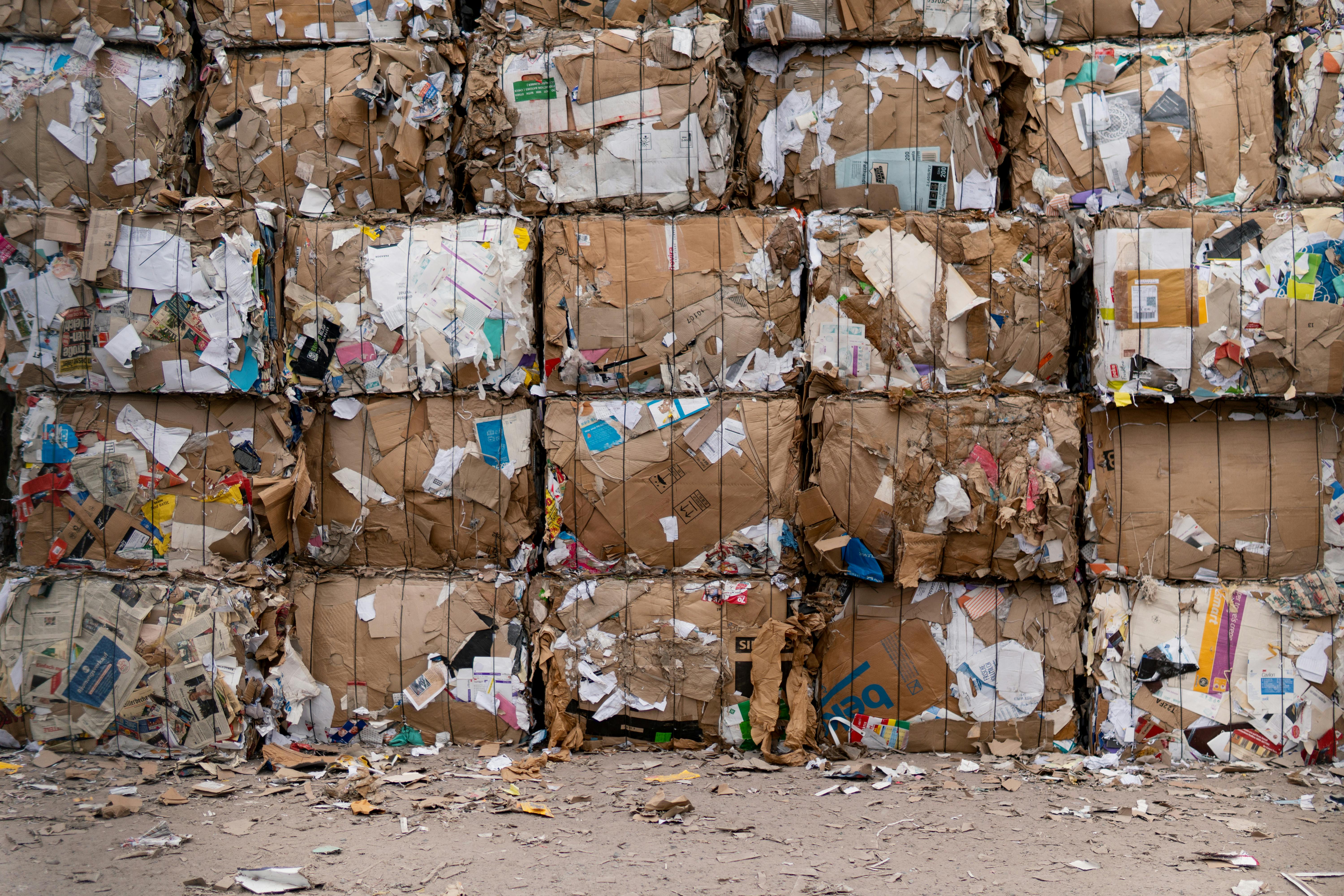To Make a Difference for Climate Action, Here's What Sustainable Fashion Needs to Do in 2025
[ ]
Article

2025 brings with it a clarifying reminder of our collective arrival at a pivotal mark in our planetary calendar. Within climate change discourse and dialogue; 2030 is an extremely important juncture point. We’re now officially halfway there — and without fear-mongering, it's critical that we’re reminded of this moment in time, and the urgency of what lies ahead for us.
For over a decade, the fashion industry has woken up to some of the most searing truths about its contribution to ecological destruction and social exploitation.
For over a decade, the fashion industry has woken up to some of the most searing truths about its contribution to ecological destruction and social exploitation.
Our series, Outside The LAB, is focused on telling the stories of this reckoning and the transformative actions needed to reshape the industry. We’re interested in exploring how fashion can transition from being a driver of environmental harm to a force for ecological regeneration — so to ring in the new year, we have identified five key strategies that we think the wider fashion industry needs to address and take action this year.


The 2030 climate goal emerged from a combination of scientific urgency and international consensus to limit global warming and avoid catastrophic climate impacts. It was first solidified in the 2015 Paris Agreement, in which nearly 200 countries pledged to keep warming well below 2°C, ideally 1.5°C, above pre-industrial levels.
The pivotal importance of 2030 was underscored in the 2018 IPCC Special Report, which warned that global CO2 emissions must decline by 45% from 2010 levels by 2030 to stay within the 1.5°C threshold, avoiding irreversible tipping points like ice sheet collapse and biodiversity loss.
The pivotal importance of 2030 was underscored in the 2018 IPCC Special Report, which warned that global CO2 emissions must decline by 45% from 2010 levels by 2030 to stay within the 1.5°C threshold, avoiding irreversible tipping points like ice sheet collapse and biodiversity loss.
This timeline aligns with the calculated ‘carbon budget’— identified by scientists as the total emissions we can release before breaching climate safety limits—making 2030 the last feasible checkpoint for deep emission cuts before 2050, which is the final target year for achieving net-zero emissions.
Anchored in frameworks like the UN Sustainable Development Goals and reinforced by regional legislation such as the EU’s “Fit for 55” package, 2030 became a rallying point for countries, businesses, and institutions. It serves as the halfway mark to a net-zero future, offering a clear, urgent deadline for transformative action to stabilise the planet’s climate.
Suffice to say, 2025 marking five years shy of 2030, renders this year its own milestone.
Anchored in frameworks like the UN Sustainable Development Goals and reinforced by regional legislation such as the EU’s “Fit for 55” package, 2030 became a rallying point for countries, businesses, and institutions. It serves as the halfway mark to a net-zero future, offering a clear, urgent deadline for transformative action to stabilise the planet’s climate.
Suffice to say, 2025 marking five years shy of 2030, renders this year its own milestone.





The time to act is now - or yesterday, as many scientists point out.
Fashion Needs To Fully Embrace Circular Economy Models.
The backbone of a circular fashion system lies in robust recycling infrastructure—a missing puzzle piece in today’s wasteful industry. Fashion needs to imagine facilities as advanced as garment factories, that instead of churning out new clothes, are entirely focused on the careful disassembling of discared ones; breaking fibers down to their raw state for rebirth. Scaling this vision requires massive investment in technology capable of separating mixed fibers like polyester-cotton blends—a challenge that currently limits recycling efficiency. Governments, NGOs, and brands must collaborate to fund these innovations, creating hubs that can process textiles locally to reduce transportation emissions.
Recycling infrastructure is less about machines as it’s about systems. Global logistics networks must streamline the collection of used garments from consumers through accessible drop-off points and incentives like store credits. Transparency is also key; consumers want to know their donated jeans aren’t ending up in a landfill halfway around the world. The payoff? A recycling revolution that could divert millions of tons of waste, slash resource consumption, and create specialised jobs, from material engineers to local repair artisans.
Fashion Needs To Finally Scale Next-Gen Materials
The fashion industry’s dependence on resource-draining materials like polyester and conventional cotton is unsustainable, and we’ve discussed before how next-gen materials offer hope for a cleaner, greener future. Lab-grown textiles, engineered at a molecular level, require significantly less water and fewer chemicals than their natural counterparts, reducing fashion’s environmental footprint while maintaining high performance. Recycled fibers—sourced from post-consumer textiles and ocean plastics—are another breakthrough that offers a second life to discarded materials that would otherwise pollute landfills and oceans, turning waste into high-quality fabrics.
To make these materials mainstream, the industry needs to find ways to collate resources for joint research and development, ensuring that innovations move from niche to norm. Small brands, which often face higher costs for these next-gen materials, should be incentivised with subsidies to level the playing field.
The stakes are high. Scaling these materials demands substantial investment in R&D, but the payoff would be transformative. Widespread adoption of these innovations could drastically reduce the fashion industry’s reliance on harmful resources, while setting the stage for a new era of sustainable fashion practices.
Fashion Needs To Show Greater Supply Chain Transparency
Opaque supply chains in fashion have long hidden the environmental and social costs of production, from forced labor to deforestation and excessive carbon emissions. Transparency is an essential principle for ensuring accountability and driving real change.
On the regulatory front, governments should be pushing for more mandatory transparency. For example, the EU’s Corporate Sustainability Reporting Directive (CSRD) mandates companies disclose detailed sustainability data, making it increasingly difficult for brands to hide behind vague claims. Failure to comply includes legal penalties—and risks severe reputational damage and erodes consumer trust, which are now linked directly to ethical practices and the expectations of today’s consumer.
For brands to stay ahead of the curve, publishing detailed reports on their suppliers—covering factory locations, workforce demographics, and emissions data — could be the difference between greenwashing and actual change within the fashion industry. To empower consumers, brands should introduce easy-to-understand labels that clearly indicate sustainability metrics like water savings and carbon offset efforts.
The backbone of a circular fashion system lies in robust recycling infrastructure—a missing puzzle piece in today’s wasteful industry. Fashion needs to imagine facilities as advanced as garment factories, that instead of churning out new clothes, are entirely focused on the careful disassembling of discared ones; breaking fibers down to their raw state for rebirth. Scaling this vision requires massive investment in technology capable of separating mixed fibers like polyester-cotton blends—a challenge that currently limits recycling efficiency. Governments, NGOs, and brands must collaborate to fund these innovations, creating hubs that can process textiles locally to reduce transportation emissions.
Recycling infrastructure is less about machines as it’s about systems. Global logistics networks must streamline the collection of used garments from consumers through accessible drop-off points and incentives like store credits. Transparency is also key; consumers want to know their donated jeans aren’t ending up in a landfill halfway around the world. The payoff? A recycling revolution that could divert millions of tons of waste, slash resource consumption, and create specialised jobs, from material engineers to local repair artisans.
Fashion Needs To Finally Scale Next-Gen Materials
The fashion industry’s dependence on resource-draining materials like polyester and conventional cotton is unsustainable, and we’ve discussed before how next-gen materials offer hope for a cleaner, greener future. Lab-grown textiles, engineered at a molecular level, require significantly less water and fewer chemicals than their natural counterparts, reducing fashion’s environmental footprint while maintaining high performance. Recycled fibers—sourced from post-consumer textiles and ocean plastics—are another breakthrough that offers a second life to discarded materials that would otherwise pollute landfills and oceans, turning waste into high-quality fabrics.
To make these materials mainstream, the industry needs to find ways to collate resources for joint research and development, ensuring that innovations move from niche to norm. Small brands, which often face higher costs for these next-gen materials, should be incentivised with subsidies to level the playing field.
The stakes are high. Scaling these materials demands substantial investment in R&D, but the payoff would be transformative. Widespread adoption of these innovations could drastically reduce the fashion industry’s reliance on harmful resources, while setting the stage for a new era of sustainable fashion practices.
Fashion Needs To Show Greater Supply Chain Transparency
Opaque supply chains in fashion have long hidden the environmental and social costs of production, from forced labor to deforestation and excessive carbon emissions. Transparency is an essential principle for ensuring accountability and driving real change.
On the regulatory front, governments should be pushing for more mandatory transparency. For example, the EU’s Corporate Sustainability Reporting Directive (CSRD) mandates companies disclose detailed sustainability data, making it increasingly difficult for brands to hide behind vague claims. Failure to comply includes legal penalties—and risks severe reputational damage and erodes consumer trust, which are now linked directly to ethical practices and the expectations of today’s consumer.
For brands to stay ahead of the curve, publishing detailed reports on their suppliers—covering factory locations, workforce demographics, and emissions data — could be the difference between greenwashing and actual change within the fashion industry. To empower consumers, brands should introduce easy-to-understand labels that clearly indicate sustainability metrics like water savings and carbon offset efforts.

Fashion Needs To Honestly Confront Its Overproduction Issue
Fashion produces over 100 billion garments annually—far exceeding consumer demand—and this overproduction drives waste while devaluing resources and encouraging unsustainable consumption. To address this, brands must embrace innovative strategies that prioritise quality over quantity. On-demand manufacturing, for instance, allows items to be produced only after an order is placed, minimising excess stock and waste. Advanced AI tools could predict demand with greater precision, using data to forecast trends and inventory needs, thus reducing the likelihood of overproduction.
Equally important is shifting consumer behavior. It is each of our responsibility as consumers to be continually educated on the long-term benefits of mindful consumption as we build a culture of conscious shopping. The broader impact of reducing overproduction is profound. Fewer garments in circulation mean lower costs for storage, markdowns, and disposal, offering significant savings for brands while also contributing to a more ethical, sustainable model.
Fashion Needs Widespread Collaborative Industry Action
No single company can solve the fashion industry’s systemic challenges on its own. To tackle the scale of the crisis, collective efforts are essential for driving industry-wide transformation and establishing the infrastructure needed to adopt sustainable practices. Collaborative approaches play a pivotal role in this process. Sharing intellectual property, such as sustainability technologies and innovations, could help accelerate progress across the sector, ensuring that groundbreaking solutions are accessible to all brands, big or small.
Policymakers must also continue to play a crucial role in facilitating this shift. Introducing extended producer responsibility (EPR) laws can hold brands accountable for the lifecycle of their products, requiring them to take responsibility for post-consumer waste. We have seen both South Africa and the EU engage in this kind of policy-making in 2024, and Governments can further incentivize sustainable practices by offering tax breaks or grants to companies that meet sustainability benchmarks, making it easier for brands to invest in eco-friendly technologies and practices.
At the consumer level, brands need to be committed to empowering their customers to make sustainable choices by providing clear, accessible information about the environmental and social impacts of their products. By promoting shared responsibility, brands can emphasise that consumer actions—such as buying fewer but better products or recycling garments—are essential to the success of industry-wide sustainability efforts. In this way, the power of collaboration extends beyond industry players to include consumers, forming a united front for a more sustainable future.
As we challenge the compartmentalised nature of the fashion industry’s systems; we’re taking heed of the power rooted in collaboration. Here’s hoping that 2025 brings about the kind of change that will protect our future; of fashion, the planet and our collective, human dignity.
Fashion produces over 100 billion garments annually—far exceeding consumer demand—and this overproduction drives waste while devaluing resources and encouraging unsustainable consumption. To address this, brands must embrace innovative strategies that prioritise quality over quantity. On-demand manufacturing, for instance, allows items to be produced only after an order is placed, minimising excess stock and waste. Advanced AI tools could predict demand with greater precision, using data to forecast trends and inventory needs, thus reducing the likelihood of overproduction.
Equally important is shifting consumer behavior. It is each of our responsibility as consumers to be continually educated on the long-term benefits of mindful consumption as we build a culture of conscious shopping. The broader impact of reducing overproduction is profound. Fewer garments in circulation mean lower costs for storage, markdowns, and disposal, offering significant savings for brands while also contributing to a more ethical, sustainable model.
Fashion Needs Widespread Collaborative Industry Action
No single company can solve the fashion industry’s systemic challenges on its own. To tackle the scale of the crisis, collective efforts are essential for driving industry-wide transformation and establishing the infrastructure needed to adopt sustainable practices. Collaborative approaches play a pivotal role in this process. Sharing intellectual property, such as sustainability technologies and innovations, could help accelerate progress across the sector, ensuring that groundbreaking solutions are accessible to all brands, big or small.
Policymakers must also continue to play a crucial role in facilitating this shift. Introducing extended producer responsibility (EPR) laws can hold brands accountable for the lifecycle of their products, requiring them to take responsibility for post-consumer waste. We have seen both South Africa and the EU engage in this kind of policy-making in 2024, and Governments can further incentivize sustainable practices by offering tax breaks or grants to companies that meet sustainability benchmarks, making it easier for brands to invest in eco-friendly technologies and practices.
At the consumer level, brands need to be committed to empowering their customers to make sustainable choices by providing clear, accessible information about the environmental and social impacts of their products. By promoting shared responsibility, brands can emphasise that consumer actions—such as buying fewer but better products or recycling garments—are essential to the success of industry-wide sustainability efforts. In this way, the power of collaboration extends beyond industry players to include consumers, forming a united front for a more sustainable future.
As we challenge the compartmentalised nature of the fashion industry’s systems; we’re taking heed of the power rooted in collaboration. Here’s hoping that 2025 brings about the kind of change that will protect our future; of fashion, the planet and our collective, human dignity.


[ Follow ]



